Thingiverse
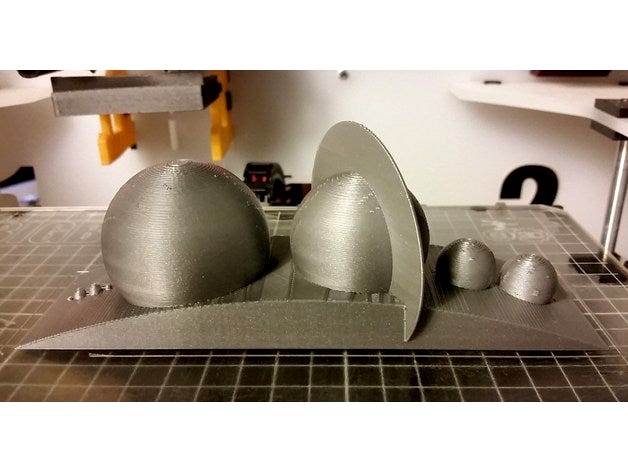
Modelling the Solar System with OnShape by SpoonUnit
by Thingiverse
Last crawled date: 2 years, 12 months ago
I really liked the original model, but was frustrated with original resolution. Though tc-fea did increase the resolution, I still thought it would be interesting to model this up. mom0sarah's project inspired me to get the job done, and perhaps provide an initial parametric model to anyone wanting to tackle the project.
I used the referenced NASA doc for planetary dimensions, and took Saturn's ring dimensions from Wikipedia. However, as the rings are a mere kilometer thick at most, they simply won't appear after slicing if we leave it there. As a result, the rings are modeled as 6,000km wide so we can see them in the final model !
The first model demonstrates relative sizes. The toughest part was probably creating a model where the planets sat at roughly equal distance apart. I made an assumption to simplify the mathematics, which is why it's not completely perfect in this regard. The most obvious problem lies in the distance between Mars and Jupiter.
If you print at the size uploaded, you'll be loading a model of the planets' (and sun's, part of the edge of which forms the base) relative sizes at a scale of roughly 1mm to 3600Km, rendering our planet a mere 3.5mm diameter marble.
The second model focuses more on relative distances, but due to the sheer distances involved, retains relative sizes in order to have something interesting to show. Once again in this model, Saturns rings are modelled as 6000km thick. As we're more interested in this model in distances though, I had to devise some way to show that. In this case, the distance between each planet is relative to the actual distances between the two planets involved. However, this means that the distance between two non-adjacent planets is not modelled. I started in the full size model by modelling the distance between Mercury and the Sun as 1mm, giving us a scale of 1mm to 0.39AU, or 1mm to 58.3 million Km. However, at that scale, the model was half a meter wide. I scaled it down to 15 cm, resulting in a final scale of 1mm to 216 million Km when looking at the distance between planets.
Even though we seem to have decided that Pluto is no longer large enough to classify as a planet, I decided to leave it in both models.
Finally, the model itself is yours to mess with. You'll need to make a copy of it to your own OnShape account.
https://cad.onshape.com/documents/a999e884b0eb8bdc9ec1c200/w/3b9eb41ded2e553036b01c31/e/a6f1bc13458d4ac643d20df4
You can print both models without support. The first should form a modest test for bridging.
E3D Bigbox print - https://www.youtube.com/watch?v=eNguP7DO1K4&feature=youtu.be
I used the referenced NASA doc for planetary dimensions, and took Saturn's ring dimensions from Wikipedia. However, as the rings are a mere kilometer thick at most, they simply won't appear after slicing if we leave it there. As a result, the rings are modeled as 6,000km wide so we can see them in the final model !
The first model demonstrates relative sizes. The toughest part was probably creating a model where the planets sat at roughly equal distance apart. I made an assumption to simplify the mathematics, which is why it's not completely perfect in this regard. The most obvious problem lies in the distance between Mars and Jupiter.
If you print at the size uploaded, you'll be loading a model of the planets' (and sun's, part of the edge of which forms the base) relative sizes at a scale of roughly 1mm to 3600Km, rendering our planet a mere 3.5mm diameter marble.
The second model focuses more on relative distances, but due to the sheer distances involved, retains relative sizes in order to have something interesting to show. Once again in this model, Saturns rings are modelled as 6000km thick. As we're more interested in this model in distances though, I had to devise some way to show that. In this case, the distance between each planet is relative to the actual distances between the two planets involved. However, this means that the distance between two non-adjacent planets is not modelled. I started in the full size model by modelling the distance between Mercury and the Sun as 1mm, giving us a scale of 1mm to 0.39AU, or 1mm to 58.3 million Km. However, at that scale, the model was half a meter wide. I scaled it down to 15 cm, resulting in a final scale of 1mm to 216 million Km when looking at the distance between planets.
Even though we seem to have decided that Pluto is no longer large enough to classify as a planet, I decided to leave it in both models.
Finally, the model itself is yours to mess with. You'll need to make a copy of it to your own OnShape account.
https://cad.onshape.com/documents/a999e884b0eb8bdc9ec1c200/w/3b9eb41ded2e553036b01c31/e/a6f1bc13458d4ac643d20df4
You can print both models without support. The first should form a modest test for bridging.
E3D Bigbox print - https://www.youtube.com/watch?v=eNguP7DO1K4&feature=youtu.be
Similar models
thingiverse
free

Sun and Planets to scale - with accurate Saturn rings by conorokane
... sun). i've also hollowed out the interior of the model so that it prints much faster (about 1/3rd the time of the original).
3dwarehouse
free

Planets, Sun and Moon
...p 8) #earth #image #jupiter #mercury #moon #neptune #paint #photo #pluto #saturn #spheres #sun #texture #texturing #uranus #venus
3dwarehouse
free

Solar system
...luto #mars #mercury #moons #neptune #planets #rings #saturn #solar #solar_system #space #stars #sun #system #uranus #venus #world
grabcad
free

Solar system scale model
... fit into the model (i.e., they are intentionally not to scale). dimensions are taken from a website affiliated to nasa and esa.
3dwarehouse
free

Scale Solar System
...#earth #jupiter #mars #mercury #neptune #outer_space #planet #saturn #scale #scale_model #solar_system #space #sun #uranus #venus
3dwarehouse
free

Inner Solar System
...the same model. however, i have some ideas in that regard. #earth #mars #mercury #moon #planet #planets #solar_system #sun #venus
3dwarehouse
free

Saturn And It's Major Moons
...helium with traces of water, methane and ammonia moons 60 as of july 2007 #moon #moons #planet #ring #rings #saturn #solar_system
3dwarehouse
free

Birth Moment Solar System BMSS Scaled Planets
...d planets may not be perfect as scaling them was more difficult. the distances are not scaled at all. #solar_system_planets_scale
3dwarehouse
free

Planet Saturn And Sun
...and sun
3dwarehouse
this is the size of saturn and the sun. #espacio #planet #planeta #planetas #planets #saturn #saturno #space
3dwarehouse
free

Solar System
...wrong. note is very heavy #asteroid #ayrk #belt #earth #jupiter #kuiper #mars #mercury #neptune #ring #saturn #sun #uranus #venus
Spoonunit
thingiverse
free

Scoops by SpoonUnit
...t
thingiverse
another design for a scoop with handle. prints with no supports. two models attached, one with holes, one without.
thingiverse
free

Dollar Coin by SpoonUnit
...dollar coin by spoonunit
thingiverse
a simple coin with a dollar symbol and a lightly knurled edge.
thingiverse
free

Download Icon by SpoonUnit
...wnload icon by spoonunit
thingiverse
designed to be printed in two separate parts (possibly separate colours) and then connected
thingiverse
free

Tax Disc Replacement by SpoonUnit
...tax disc replacement by spoonunit
thingiverse
a little something to go in the mini.
thingiverse
free

Plant Sign by SpoonUnit
...
thingiverse
a customizable plant sign to help mark up herbs and plants in the garden.
print with two colors for added effect.
thingiverse
free

Pentomizer Update by SpoonUnit
...t
thingiverse
a trivial remix of mathgrrl's thing, with the added option of setting a desk organizer element height to zero.
thingiverse
free

Wave Bowl by SpoonUnit
...
evoking the idea of a wave, this bowl is essentially a simple bowl shape, split, parts rotated, and finally stuck back together.
thingiverse
free

Simple Washer - Volume Printer by SpoonUnit
...simple washer - volume printer by spoonunit
thingiverse
volume printer for a simple washer
thingiverse
free

Switch Mount by SpoonUnit
...erse
a mounting bracket for maplin's illuminated switch
http://www.maplin.co.uk/p/spst-illuminated-toggle-switch-green-n30bj
thingiverse
free

BB Hinges by SpoonUnit
...sed on r-design's design, these are print in place hinges for the bigbox. both base panel and side panel hinges are provided.
Onshape
3d_export
$10

Viking Axe
...-directly compatible with any 3d printing software -developed on onshape ...
thingiverse
free

Screwdriver by OnShape
...screwdriver by onshape
thingiverse
keyring screwdriver
thingiverse
free

Test by OnShape
...test by onshape
thingiverse
just my design test.
thingiverse
free

OnShape Rook by Haackneyed
...onshape rook by haackneyed
thingiverse
made on onshape during makerbot make-a-thon 2016 in nyc.
thingiverse
free

Onshape Gear Designer by bsutton
...designer.
the linked onshape document allows you to quickly generate gears in onshape ready to be exported as an stl and printed.
thingiverse
free

Screwdriver (test) by OnShape
...screwdriver (test) by onshape
thingiverse
screwdriver test
thingiverse
free

Bearing (testing) by OnShape
...bearing (testing) by onshape
thingiverse
bearing (testing)
thingiverse
free

Flagpole Bracket by OnShape
...flagpole bracket by onshape
thingiverse
flagpole bracket
thingiverse
free

Tissue Box (test) by OnShape
...tissue box (test) by onshape
thingiverse
testing
thingiverse
free

Onshape King Chess piece by Haackneyed
...onshape king chess piece by haackneyed
thingiverse
created on onshape as part of makerbot's make-a-thon 2016.
Solar
3d_ocean
$4

Solar Panel
...solar panel
3docean
cell panel solar
fully textured solar panel with scaleable solar cells.
3ddd
$1
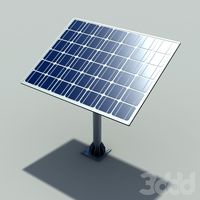
solar cell
...solar cell
3ddd
солнечная батарея
solar cell
3d_export
$7

Solar Panel
...solar panel
3dexport
perfect solar panel for roof, modular, extensible.
3d_export
$5
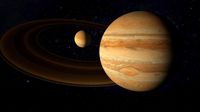
solar system
...solar system
3dexport
solar system in c4d, with 8k nasa textures
3d_export
$15
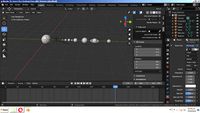
solar system
...nd the other the sun, the earth and the moon, the latter has an animation with camera movement included, the files are in spanish
3ddd
$1

Zumtobel Solar II
...obel solar ii
3ddd
zumtobel , solar
модель направленного светильника solar 2 от zumtobel
3d_ocean
$14

Solar Panels
... materials, hdri map, vray gi setup. four solar panels: type1: 1849 – poly, 2035 – vert. type2: 954 – poly, 1051 – vert. type3...
turbosquid
$29

Solar System
...squid
royalty free 3d model solar system for download as fbx on turbosquid: 3d models for games, architecture, videos. (1236050)
turbosquid
$25

Solar Panel
...osquid
royalty free 3d model solar panel for download as max on turbosquid: 3d models for games, architecture, videos. (1516562)
turbosquid
$25

Solar System
...uid
royalty free 3d model solar system for download as blend on turbosquid: 3d models for games, architecture, videos. (1314058)
System
archibase_planet
free
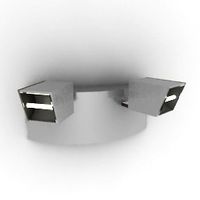
System
...m
archibase planet
fire alarm system fire alarm box
security light system - 3d model (*.gsm+*.3ds) for interior 3d visualization.
archibase_planet
free
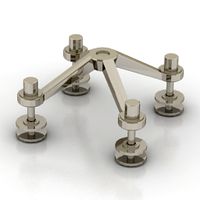
Spider system
...stem spider glass system
spider system to fix glass stefano galli n050912 - 3d model (*.gsm+*.3ds) for interior 3d visualization.
3ddd
$1

Euforia System
...euforia system
3ddd
euforia
euforia system
3d_export
$50

Roof system Truss system 3D Model
...oof system truss system 3d model
3dexport
roof system truss truss stage
roof system truss system 3d model aleksbel 38970 3dexport
3ddd
$1

DVD System
...dvd system
3ddd
dvd , schneider
dvd system
design_connected
free

Seating system
...seating system
designconnected
free 3d model of seating system
3d_export
$5

solar system
...solar system
3dexport
solar system in c4d, with 8k nasa textures
3ddd
$1

Quanta System
...quanta system
3ddd
медицина
quanta system.
лазерное оборудование для медицинских центров
3d_export
$15

solar system
...nd the other the sun, the earth and the moon, the latter has an animation with camera movement included, the files are in spanish
3d_export
$14

missile system
...missile system
3dexport
